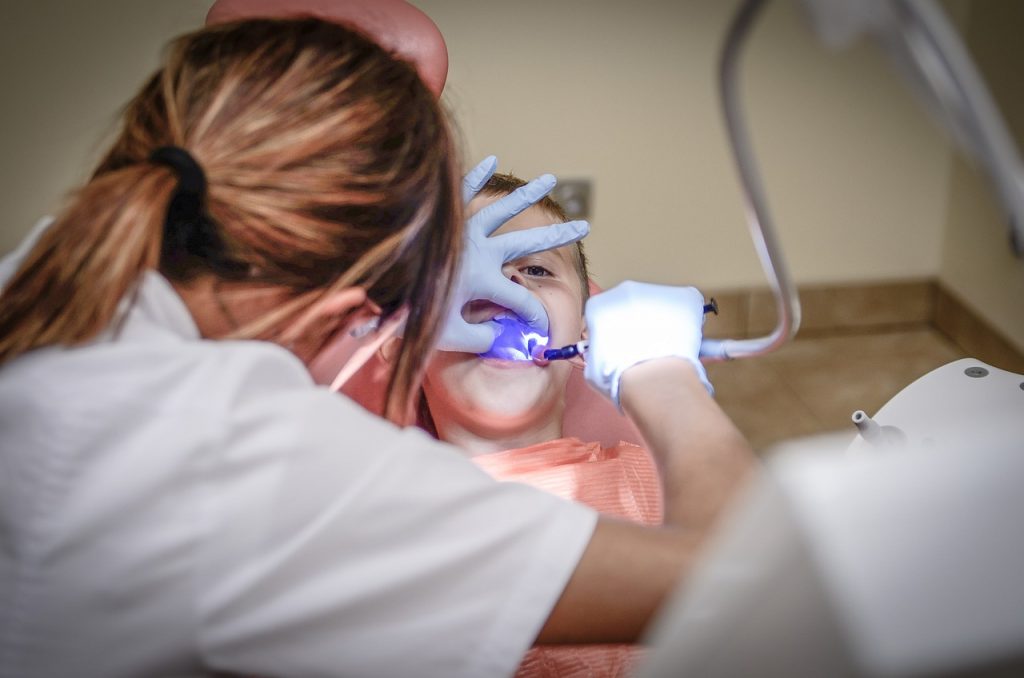
Signs that your baby’s tooth is ready to be removed
Introduction:
The teething process in babies is an exciting stage often accompanied by certain challenges. One of the important milestones during this stage is when baby teeth start to fall out to make way for permanent teeth. It is crucial for parents to be aware of the signs indicating that a baby tooth is ready to be removed. In this article, we will explore some of these signs to help you understand when it is the right time for your baby to lose a tooth.
Tooth Mobility:
One of the clearest signs that a baby tooth is ready to be removed is its mobility. When baby teeth are about to fall out, they usually become slightly loose. You may notice the tooth moving back and forth when your baby chews on food or even when you gently touch it with a clean finger. However, it is essential to exercise caution and avoid forcing the extraction if the tooth is not loose enough yet.
Emergence of a Permanent Tooth:
Another obvious sign that a baby tooth is ready to be removed is the emergence of the permanent tooth behind the baby tooth. You may notice a new tooth emerging behind the baby tooth, gradually pushing it outwards. In this case, it is important to be patient and allow the natural falling process to unfold. The permanent tooth will find its way and replace the baby tooth appropriately.
Changes in the Appearance of the Baby Tooth:
Before falling out, the baby tooth may undergo some visible changes. It may become darker or yellowish, which is normal and due to the resorption of root tissues. Additionally, you may notice small cracks or fissures in the tooth enamel. These changes are indicators that the baby tooth is in the process of falling out and will soon be replaced by a permanent tooth.

Discomfort or Pain:
Your baby may experience discomfort or pain in the area where the baby tooth is about to fall out. They may complain more than usual, have difficulty chewing, or show sensitivity when touching the affected area.
What to do if your baby cries over the tooth that is ready to be removed:
It is normal for some babies to experience fear, anxiety, or discomfort when the time comes for a baby tooth to fall out. If your baby cries or appears restless, there are measures you can take to help them feel more comfortable during this process:
a) Provide comfort and emotional support: Your baby may feel confused or scared about the sensation of losing a tooth. Offer words of encouragement, hugs, and gentle caresses to reassure them. Show them that you are there to support them during this transition.
b) Pain relief: If your baby experiences discomfort or pain due to the falling of the baby tooth, you can use natural methods to alleviate the discomfort. Applying a cold compress to the affected area or giving them softer and cooler foods can provide some relief.
c) Avoid forcing extraction: Although it may be tempting to assist your baby in loosening the baby tooth, it is important to remember that forced extraction can cause additional damage and pain. Allow the tooth to fall out naturally without intervention.
d) Consult a dental professional: If your baby shows a high level of discomfort or excessive pain, or if the baby tooth’s falling is significantly delayed, it is advisable to consult a pediatric dentist. The professional can assess the situation and provide you with appropriate advice to ensure everything is in order.
Remember that each baby is different and may react differently to the loss of baby teeth. Be patient, understanding, and provide the necessary support to make your child feel secure during this exciting but sometimes challenging process.
Frequency of Checking Baby Teeth:
In addition to being aware of the signs indicating that a baby tooth is ready to be removed, it is important to establish a routine of regular dental check-ups for your baby. Here are some guidelines regarding how often baby teeth should be checked:
a) First dental visit: It is recommended that your baby has their first dental visit when their first baby tooth appears or around their first birthday. This initial visit will allow the dentist to assess your baby’s dental development, provide you with care advice, and answer any questions you may have.
b) Regular check-ups: Starting from the first visit, it is recommended to schedule regular dental check-ups every six months or as per your dentist’s specific recommendations. During these exams, the dentist will conduct a comprehensive review of your baby’s baby teeth, assess their oral health, and offer guidance on proper oral hygiene.
c) Home observation: In addition to dental visits, it is crucial to regularly observe your baby’s baby teeth at home. Check the teeth for any changes in appearance, such as spots, discolorations, or visible cavities. Also, pay attention to any complaints or signs of discomfort that may indicate a dental problem.
Remember, proper dental care from an early age is essential for establishing good oral health throughout your baby’s life. By following the mentioned guidelines and maintaining good oral hygiene, you can contribute to your little one’s dental well-being and prevent potential problems in the future.
Should I call the pediatric dentist if my baby’s tooth is ready to be removed?
The shedding of a baby tooth is a natural process in your baby’s dental development and, in most cases, does not require immediate dental intervention. However, there are situations where it may be advisable to call the pediatric dentist. Here are some guidelines to determine when you should contact the professional:
a) Delay in tooth shedding: If a baby tooth has significantly loosened but does not fall out after several weeks, it might be necessary for the dentist to evaluate the situation. The dentist can determine whether extraction is necessary or if the tooth will fall out on its own over time.
b) Intense pain or discomfort: If your baby experiences severe or prolonged pain before or after the shedding of a baby tooth, it is advisable to consult with a pediatric dentist. The dentist can examine the area and determine if there are any additional problems, such as an infection or a baby tooth not properly detaching.
c) Visible problems in permanent teeth: If you notice any anomalies or issues with the emerging permanent tooth after a baby tooth falls out, it is important to seek the attention of the pediatric dentist. The dentist can assess the situation and take necessary measures to correct any early dental problems.
In general, if you have any concerns or doubts about your baby’s baby teeth shedding, it is recommended to communicate with a pediatric dentist. The dental healthcare professional can provide you with appropriate guidance and address your concerns to ensure optimal dental health for your baby.
| Recommendations |
| Tooth Mobility: |
| – Be aware of the mobility of the baby tooth. If it becomes |
| slightly loose and moves back and forth, it may be ready |
| to be removed. However, avoid forcing extraction if the |
| tooth is not loose enough yet. |
| Emergence of a Permanent Tooth: |
| – Keep an eye out for the emergence of a permanent tooth |
| behind the baby tooth. Allow the natural falling process |
| to unfold and let the permanent tooth replace the baby |
| tooth appropriately. |
| Changes in the Appearance of the Baby Tooth: |
| – Notice any visible changes in the baby tooth. It may |
| become darker or yellowish, and small cracks or fissures |
| in the tooth enamel may appear. These are indicators that |
| the baby tooth is in the process of falling out and will |
| soon be replaced by a permanent tooth. |
| Discomfort or Pain: |
| – Be attentive to any discomfort or pain your baby may |
| experience in the area where the baby tooth is about to |
| fall out. They may complain, have difficulty chewing, or |
| show sensitivity when touching the affected area. |
| What to do if your baby cries over the tooth that is |
| ready to be removed: |
| a) Provide comfort and emotional support to reassure your |
| baby during this transition. Offer words of encouragement, |
| hugs, and gentle caresses. |
| b) Use natural methods to alleviate discomfort if your baby |
| experiences pain. Apply a cold compress to the affected |
| area or give them softer and cooler foods for relief. |
| c) Avoid forcing extraction. Allow the tooth to fall out |
| naturally without intervention to prevent additional |
| damage and pain. |
| d) Consult a pediatric dentist if your baby shows a high |
| level of discomfort, excessive pain, or if the baby tooth |
| is significantly delayed in falling out. The dentist can |
| provide appropriate advice and ensure everything is in |
| order. |
| Frequency of Checking Baby Teeth: |
| – Schedule your baby’s first dental visit when their first |
| baby tooth appears or around their first birthday. |
| Subsequently, schedule regular dental check-ups every |
| six months or as recommended by your dentist. |
| – Regularly observe your baby’s baby teeth at home. Check |
| for any changes in appearance and pay attention to any |
| complaints or signs of discomfort that may indicate a |
| dental problem. |
| Should I call the pediatric dentist if my baby’s tooth is |
| ready to be removed? |
| – Call the pediatric dentist if a baby tooth has significantly |
| loosened but does not fall out after several weeks, if your |
| baby experiences intense or prolonged pain, or if there are |
| visible problems with the emerging permanent tooth. |
| Conclusion: |
| – Pay attention to the signs indicating that a baby tooth |
| is ready to be removed to ensure a proper and complication- |
| free process. Consult a pediatric dentist if you have any |
Conclusion:
The shedding of baby teeth is a natural part of your baby’s dental development. Being attentive to the signs indicating that a baby tooth is ready to be removed will help ensure that the process occurs properly and without complications. Observe the mobility of the tooth, the appearance of a permanent tooth, changes in the baby tooth’s appearance, and any discomfort or pain your baby may experience. If you have any doubts or concerns, do not hesitate to consult a pediatric dentist, who can provide you with the necessary guidance to properly care for your child’s dental health. Remember, every child is unique, and the timing of baby teeth shedding may vary, so be patient and provide support to your little one during this exciting process.
If you have more specific questions or concerns, remember that you can contact us and find us anytime at Petit Smiles in Coral Gables and Doral, FL.


